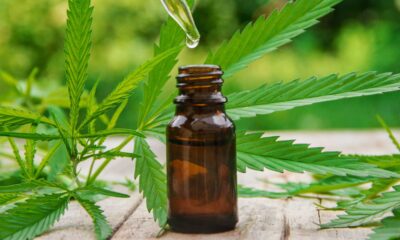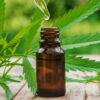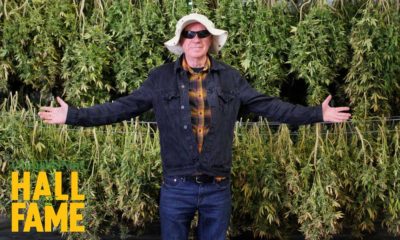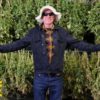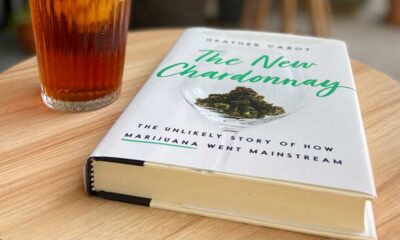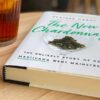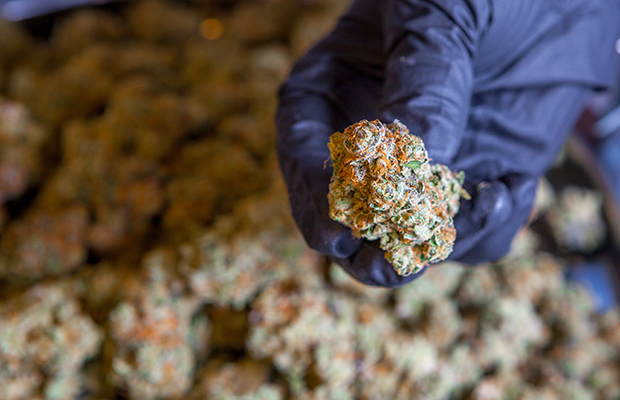
Books
Book Review: ‘Marijuana Harvest’ Helps Cultivators Hone in on the Craft
New book from Ed Rosenthal and David Downs explores innovations in other agricultural industries and applies them to cannabis cultivation.
Master cannabis cultivator Ed Rosenthal is in a state of constant experimentation. Within his office there is a blue jar with an electronic top measuring the precise humidity levels inside. The Miron glass jar is a deep midnight blue, designed to eliminate most light from passing through, and has a note taped to the outside that reads “Test: Do not open.” The jar is just one of the many trials Rosenthal is conducting as a part of research for his newest book release “Marijuana Harvest,” and inside there is a tomato that he keeps for months to assess the freshness of the produce. It’s all part of the process to write the chapter on curing cannabis, a step that’s “essential to the taste and experience of the finished buds.”
“Like aged wines, well-cured buds are smooth and flavorful,” the book explains. “Uncured buds still ‘work’ but are not nearly as enjoyable or desirable. However, curing does not make buds more potent than they already are.”
“Marijuana Harvest,” co-authored by San Francisco Chronicle Cannabis Editor and former Cannabis Now Senior Editor David Downs, is the latest offering in a long legacy of cultivation books released by Rosenthal. And although the “guru of ganja” has been publicly pushing for homegrown backyard cannabis since the late ’70s, arrives at an optimal time when more Americans than ever before have the ability to grow and cultivate marijuana for medical and personal use. The book offers techniques design to increase the quality and yield of homegrown flowers and pulls from years of research, controlled experiments and interviews with cannabis cultivators on what has worked so far. The methods inside aren’t completely original, but rather, have been distilled in a way that highlights cannabis’ accelerated development in modern crop science and draws from innovations in other agricultural industries to apply them towards growing marijuana.
“We are at the dawn of cannabis as a modern crop science,” Downs writes in the book’s introduction. “Articles are being published in agronomy and chemistry journals and soon, we’ll see entire journals devoted to cannabis and, eventually, libraries of it at places like the University of California Davis.”

To research the book, the two authors traveled to grow rooms across the country asking questions and compiling the knowledge and tools used to cultivate cannabis as well as other farmed crops.
“And we combined that field reporting with what Ed does best: fearlessly question and innovate,” Downs writes. “What’s impressed me the most about working with Ed is his daringness to hypnotize, and his egolessness when it comes to discarding disproven ideas. It’s the difference between the expert, and the genius — that drive to relentlessly question and propose a new way of doing things. The fortitude to potentially be wrong, and indeed, see progress in failure… It strikes me that Ed was ‘failing fast’ decades before it was a Silcon Valley mantra.”
For my own minor contribution to “Marijuana Harvest,” I joined Rosenthal and Cannabis Now Staff Writer Jimi Devine in the lounge area at the Cannabis Buyer’s Club Berkeley, more commonly known as CBCB, to test a device with the potential to detect the moisture levels in buds and concentrates. Knowing the humidity present in the buds gives an indication as to how long one should dry cannabis before sale. After all, the value of premium nug is measured in its weight and potency and if the moisture levels inside all those mouth-watering dank trichomes could be easily ascertained, it could make things much easier for growers to judge when their flowers are ready to be enjoyed. In order to conduct the experiment Rosenthal brought along an electronic moisture meter, equipment that a building contractor would use to detect the moisture levels with the wall of a building. Rosenthal is testing whether this tech can be used on cannabis and I’ve come along for my hand modeling skills.
Through the experiment, in which I pressed test buds and concentrates provided by CBCB onto the back of the meter, we discovered together that moisture levels in the fingers could affect the reading and we began to use plastic, glass and metal plates to separate the sample from my fingers.
“In the cannabis community there has been a widespread opinion that 12 percent moisture is a good content of water for smoking in a joint that won’t go out and is also the percentage at which small sticks snap,” Rosenthal writes, explaining that the meter should optimally read around this percentage.
Drying cannabis ends at 14-15 percent moisture, but a pleasant smoke is found around that 12 percent sweet spot. The book explains that cannabis becomes harsh and dry when moisture levels read at around 10 percent.
“Marijuana Harvest” is designed to teach marijuana growers of all scales “how to avoid making costly mistakes, identify problems and solve them quickly” and is full of options to jump in on the fun of developing the science around the world’s favorite flower with further personal innovation.
“Experiment and find what works for you.”
TELL US, have you ever grown cannabis?





